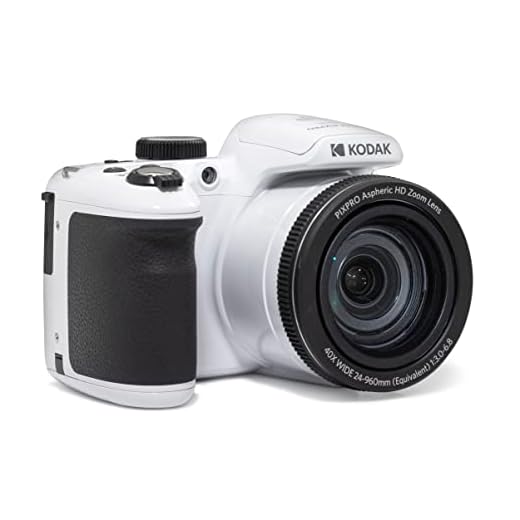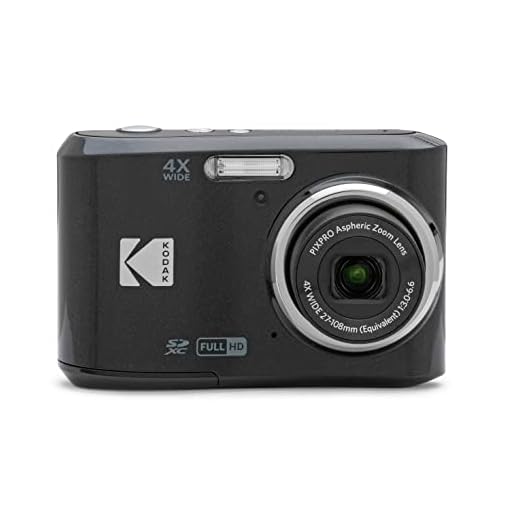



In the world of photography, the advent of digital cameras revolutionized how people capture and share moments. Gone were the days of film rolls and darkrooms, as these innovative devices offered a convenient and efficient way to take, store, and edit images. But when exactly did digital cameras become widely available to the public?
The transition from film to digital photography began in the late 20th century, with the first digital camera prototype created by Kodak engineer Steve Sasson in 1975. However, it wasn’t until the late 1990s and early 2000s that digital cameras gained popularity and became more accessible to the general public.
One of the pioneers in the market, the Sony Mavica, was introduced in 1981 and was one of the first commercially available digital cameras. However, it utilized video floppy disks to store images and had a hefty price tag, making it more of a niche product rather than a mainstream device.
It wasn’t until the mid-1990s when digital cameras began to make significant advancements and become more widely available to consumers. Companies like Kodak, Canon, and Nikon started releasing consumer-friendly models that were more affordable, compact, and easy to use. This marked a turning point in the photography industry, as the convenience and instant gratification of digital photography started to gain widespread attention and popularity.
By the early 2000s, digital cameras had become a common sight in households around the world. The rise of digital technology and the internet also played a crucial role in the widespread adoption of digital cameras. People could now easily share their digital images online, which further fueled the demand for these devices.
Overview of Digital Cameras
Digital cameras revolutionized the world of photography by replacing traditional film cameras with devices that capture and store images as digital files. These cameras use image sensors to convert light into digital data, allowing users to instantly view, edit, and share their photos.
Unlike film cameras, which require physical film rolls to be loaded and developed, digital cameras store images on memory cards or internal storage. This makes it possible to take hundreds or even thousands of photos without changing film, and also allows for instant review and deletion of unwanted images.
The history of digital cameras dates back to the 1970s, but it wasn’t until the 1990s that they became widely available to the public. The first commercially available digital camera, the Dycam Model 1, was introduced in 1990. However, it was quite expensive and had limited resolution.
It wasn’t until the late 1990s that digital cameras started gaining popularity and became more affordable. With advancements in technology, digital cameras became more compact, had higher resolution, and offered a wider range of features. This led to a significant increase in their popularity and adoption by the general public.
Today, digital cameras are ubiquitous and come in various forms, from compact point-and-shoot cameras to advanced DSLRs and mirrorless cameras. They have become an essential tool for capturing and preserving memories, as well as for professional photography.
Overall, digital cameras have transformed the way we capture and interact with images, providing convenience, flexibility, and creative opportunities that were unimaginable with film photography.
Rise of Digital Cameras
The widespread availability of digital cameras to the public happened in the late 1990s and early 2000s. This period marked a significant shift in the world of photography, as digital technology revolutionized the way people capture, store, and share images.
Prior to digital cameras, photography relied on film-based cameras, which required the use of physical rolls of film. These films needed to be developed and printed before photographs could be viewed. This process was time-consuming and often expensive, making it less accessible to the average person.
The development of digital cameras offered a convenient and cost-effective alternative. Digital cameras use image sensors to capture photographs, which are then stored as digital files. This eliminated the need for film and made it possible to instantly view and delete photographs on the camera’s display, without the need for printing.
In the late 1990s, digital cameras became more widely available to the public. Companies like Sony, Canon, and Nikon played major roles in introducing consumer-friendly digital cameras with affordable price points. These cameras offered various features and resolutions, catering to the needs and preferences of different individuals.
With the rise of digital cameras, photography entered a new era of convenience and accessibility. People could now take as many photos as they wanted without worrying about the cost of film or the need for developing. Additionally, digital images could be easily shared and manipulated using computer software.
The availability of digital cameras also sparked innovations in other areas, such as smartphone photography and social media platforms. Today, digital photography is the norm, and the market continues to evolve with new technological advancements, improving image quality and camera capabilities.
Advancements in Digital Camera Technology
In recent years, digital cameras have undergone significant advancements, revolutionizing the way we capture and store photographs. These advancements have made photography more accessible, convenient, and enjoyable for the public.
One major development in digital camera technology is the increase in megapixels. Megapixels refer to the resolution of a digital camera, and higher megapixel counts result in sharper and more detailed images. In the early 2000s, cameras with a resolution of 3-5 megapixels were considered high-end. However, as technology progressed, digital cameras with 10+ megapixels became widely available to the public.
Another notable advancement is the improvement in image sensor technology. Image sensors, such as CCD (charge-coupled device) and CMOS (complementary metal-oxide-semiconductor), are responsible for capturing light and converting it into digital information. These sensors have become more efficient, enabling cameras to capture images with better color accuracy, low-light performance, and reduced noise.
The introduction of digital image stabilization has also greatly enhanced the quality of photographs. This technology compensates for camera shake, resulting in clearer and sharper images, even in challenging conditions. Previously, photographers had to rely on tripods or steady hand movements to avoid blurriness, but digital image stabilization has made it easier for anyone to take steady shots.
One aspect that has greatly influenced the adoption of digital cameras is the advancement in storage technology. Traditional film cameras required physical film rolls, which were limited in the number of shots they could capture. However, digital cameras utilize memory cards, which can store hundreds or even thousands of photos. This advancement allows photographers to take numerous pictures without worrying about running out of film or the need to constantly change rolls.
The availability of various shooting modes and features has also contributed to the widespread adoption of digital cameras. Advanced settings like manual exposure control, white balance options, and various scene modes allow photographers to have more control over their images. Additionally, features like face detection, burst mode, and panorama assist make it easier for anyone to capture professional-looking photographs.
In conclusion, digital camera technology has advanced significantly over the years, offering increased resolution, improved image sensors, enhanced stabilization, expanded storage capacity, and various shooting modes. These advancements have made digital cameras widely available and accessible to the public, empowering individuals to capture and share moments in high-quality photographs.
Impact on the Photography Industry
The wide availability of digital cameras had a significant impact on the photography industry. Before digital cameras became widely available to the public, photography was mainly done using film cameras, which required the use of film rolls and chemical processing to develop photos. This process was time-consuming and required a level of skill and expertise.
However, with the introduction of digital cameras, photography became more accessible to the general public. Digital cameras allowed users to instantly preview and delete photos, eliminating the need for costly and time-consuming film development. This instant feedback gave photographers more control over their work and allowed them to experiment with different techniques without the fear of wasting film.
Furthermore, digital cameras revolutionized the way photographs were stored and shared. Instead of printing photos, people started storing them digitally on computers and other digital devices. This made it easier to organize and access photos, with the added benefit of being able to edit and enhance them using photo editing software.
The rise of digital cameras also gave birth to new industry sectors, such as stock photography and online photo-sharing platforms. Stock photography platforms allowed photographers to sell their digital images online, opening up new opportunities for individuals to monetize their photography skills. Online photo-sharing platforms, on the other hand, allowed photographers to effortlessly share their work with a global audience, fostering creativity and inspiration.
Overall, the availability of digital cameras to the public brought about a digital revolution in the photography industry. It democratized photography, making it more accessible and allowing a wider range of people to engage with the art form. The impact of digital cameras continues to shape the industry, with advancements in technology constantly pushing the boundaries of what is possible in photography.
Popularity and Availability
The widespread availability and popularity of digital cameras can be traced back to the late 1990s. During this time, advances in technology led to the development of digital cameras that were affordable and easy to use, making them accessible to the general public.
1994-1996: Early Developments
In the mid-1990s, the first digital cameras started to emerge. These early digital cameras were mainly used by professionals and were not yet widely available to the general public due to their high cost and limited functionality.
1997-1999: Consumer Adoption
By the late 1990s, digital cameras became more affordable and started to gain popularity among consumers. As the technology continued to improve, digital cameras offered higher resolution images and increased storage capacity, making them a viable alternative to traditional film cameras.
In 1999, the release of the Nikon D1, the first professional digital SLR camera, marked a significant milestone in the availability and acceptance of digital cameras. This camera offered high-quality images and quickly gained recognition among professionals in various fields, including journalism and photography.
2000s: Mainstream Adoption
Throughout the 2000s, digital cameras became increasingly popular and accessible to the general public. The introduction of point-and-shoot digital cameras with user-friendly features and lower price points played a significant role in fueling their widespread adoption.
The development of memory cards with larger capacities and the ability to connect digital cameras to computers for editing and sharing further contributed to the popularity of digital cameras.
By the mid-2000s, digital cameras had established themselves as the primary choice for capturing everyday moments and special events. The convenience of instant image preview and the ability to delete or retake photos without wasting film made digital cameras appealing to a broader audience.
Overall, the availability and popularity of digital cameras grew steadily from their introduction in the mid-1990s to becoming a mainstream technology in the 2000s. Today, digital cameras continue to evolve, offering higher resolutions, improved features, and seamless integration with smartphones and other devices.
Question-answer:
When were digital cameras first introduced?
Digital cameras were first introduced in the late 1980s and early 1990s.
When did digital cameras become widely available to the public?
Digital cameras became widely available to the public in the late 1990s and early 2000s.










